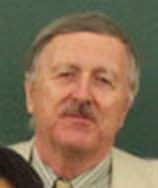Scientific Program

Milan Kalal
Faculty of Nuclear Sciences and Physical Engineering Czech Technical University, Prague
Biography:
Abstract
Current status of a recently proposed novel approach to inertial fusion energy (IFE) technology, where phase conjugating mirrors (PCM) generated by stimulated Brillouin scattering (SBS) are employed in order to implement an automatic self-navigation of every individual laser driver onto injected IFE pellets, will be reviewed. This novel technology is of a particular importance to the direct drive schemes of pellet irradiation, which is the basis of a number of IFE projects. If successful in its full scale realization, this automatic aiming scheme would greatly reduce the current technical challenges of adjusting large and heavy optical elements (final mirrors located in front of an IFE reactor) during each shot with a typical repetition rates of several Hz in order to achieve the required level of aiming accuracy of the order of about 20 micrometers.
In order to make this self-navigating technology working properly, a special target displacement compensation system was designed. This design is specific for every individual laser driver according to its direction of propagation inside of the reactor with respect to the trajectory of the injected pellets.
This self-navigation technology was already tested experimentally on a smaller scale and proved is functionality. Featuring no moving parts, this technology would allow for a high number of laser drivers to be employed. Operating with lower energies (EL < 1 kJ per driver) a potential damage caused by perpendicular SBS to the entrance windows (as encountered in classical irradiation schemes, e.g., at NIF) which needs a special attention would be non-existent.
The latest achievement in the gradual step-by-step development of this technology is a conceptual design for the removal of the unconverted basic laser harmonic. This is needed since the corresponding schemes already developed to deal with this issue (e.g., for LMJ or NIF) are not applicable in the SBS PCM IFE technology. Hence a special Faraday insulator was proposed. For the basic harmonic propagating in both directions (to be removed on its return) this insulator will work in its classical configuration. However, the higher harmonic (propagating only in the backward direction towards the reactor) will be allowed to pass through the insulator and enter the reactor.
Having the unconverted harmonic removal problem solved, a serious development of the SBS PCM based laser driver can be started to establish an upper limit of energy at which the required laser beam parameters would be still of an acceptable quality. It is very convenient that for these tests only one laser driver is necessary, thus much easier to do such research. This upper energy limit for one laser driver comes from the usage of SBS PCMs in the technology of self-navigation steering of the laser beams on the injected pellet, as it prevents spatial filtering to be employed to take care of the required laser beam quality. PCM mechanism would do the job instead, but this approach simply has its limits on energy which can be successfully handled. And this energy needs to be established experimentally. Such energy would determine the number of the laser drivers needed for a direct drive fusion facility working in the expected 5-10 Hz repetition regime of an IFE power plant. Such laser drivers working with moderate energies would be also much easier to design for the required repetition rate.
- Optics and Biomechanics
- Modern Optics
- Interferometry
- Optical Metrology
- SDM and Beyond
- Optical Imaging Systems and Machine Vision
- Optical Computing
- Micro-Opto-Electro-Mechanical Systems (MOEMS)
- Microscopy and Adaptive Optics
- Lasers in Medicine and Biology
- Engineering Applications of Spectroscopy
- Applications and Trends in Optics
- Optoelectronic Devices, Photonics, Nanophotonics and Biophotonic
- Organic Optoelectronics and Integrated Photonics
- Optical Communications, Switching and Networks
- High-speed Opto-electronic Networking

